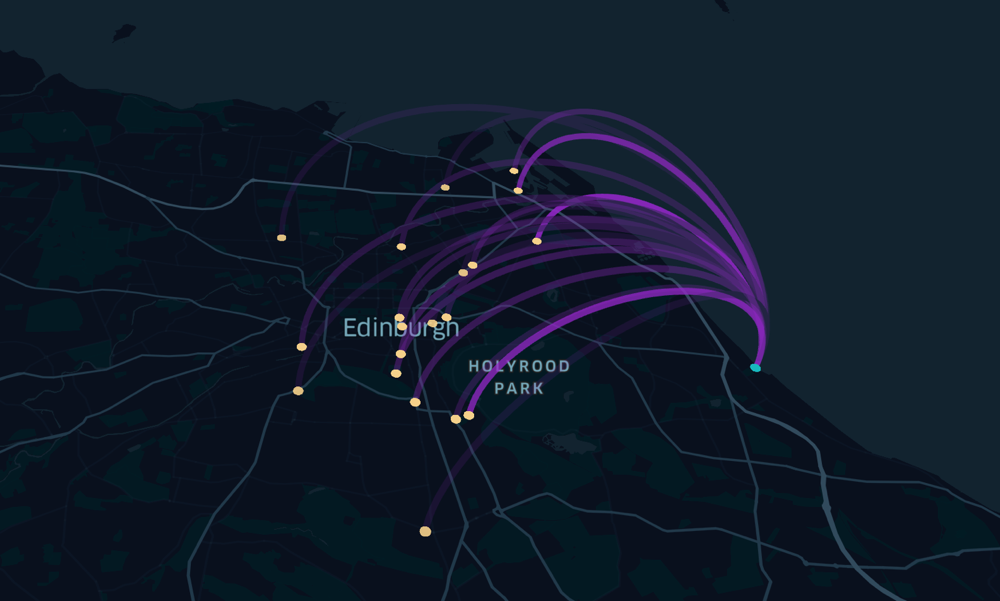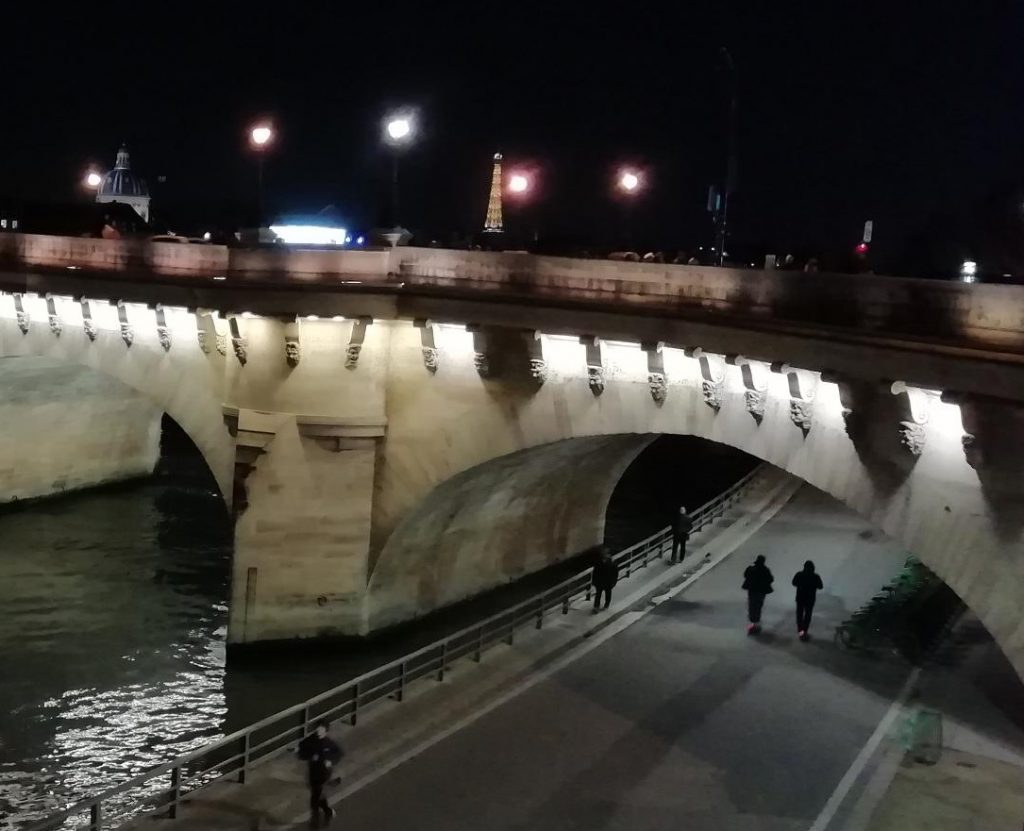
I was in Paris just before Christmas, taking part in a workshop at IFSSTAR (Université Paris-Est) on innovations in flow visualisation – GFlowiz. I talked/demonstrated some old and new ways that I and others have shown commute journeys in the UK on the web, looking both at The Great British Bike to Work and TubeCreature (developed with the HERE mapping platform), as well as some tests, with open bikeshare data, of the new React/WebGL/Deck.gl-based Kepler.gl recently developed by the Uber Engineering for interactively visualising large spatial datasets locally in a web browser. Kepler.gl works well with bikeshare flow datasets of up to around a million journeys, which, as CSVs with lat/lon pairs, can be simply downloaded, dragged and dropped into the web application:
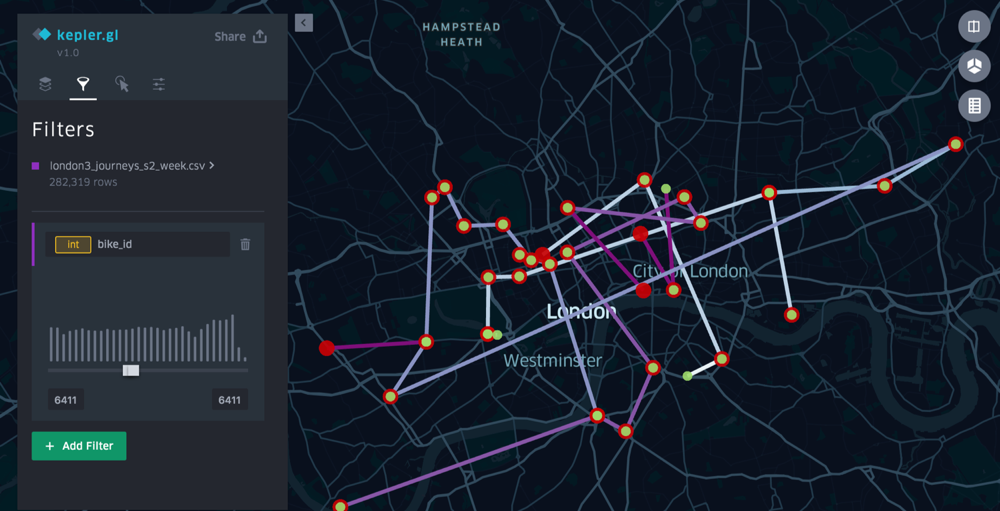
I enjoyed the other talks in the workshop too, especially the introduction to flowmap.gl by its creator, Ilya Boyandin of Teralytics.
I had a few hours left after the conference to explore the centre of Paris, so I embarked on a long walk from Forum des Halles to Notre Dame, and then up to Gare du Nord. Paris has undergone a bit of a shared/smart mobility revolution on the quiet, since I last visited a couple of years back. Escootershare has taken advantage of the disastrous start to the relaunch of Velib at the beginning of 2018, and France’s more liberal traffic laws than in the UK, with numerous companies launching their operations there. Some dockless bikeshare systems have had a go, although Ofo at least has now disappeared from Paris, and the trend for the rest doesn’t look good either.
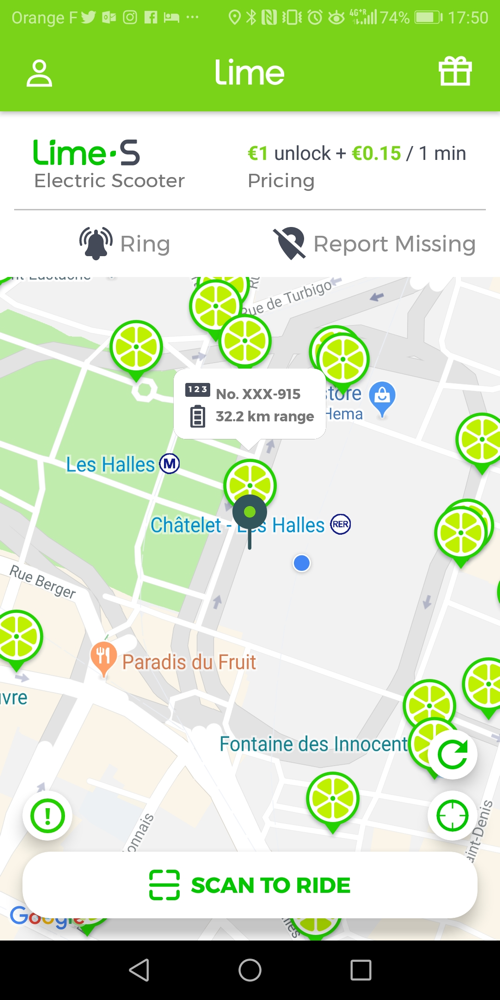
So, along my walk, I noted down all the escooter/bikeshare brands in use that I could see, along with the incumbent Velib service. There were also quite a few personally owned (or possibly white-label shares) that I spotted scooting past, which I didn’t note – for scooters at least, these were in total easily outnumbered by the brands.
Escootershares are, at the moment at least, all dockless, rather than being locked in physical stations, and I believe they tend to get taken in by casual workers overnight for recharging. My walk took place between around 6pm (i.e. end of rushhour) and 8:15pm, and I saw plenty being operated even at the end of the survey interval, so I would presume that the escooters are generally collected after this time.
Overall, I was impressed both by the uptake of these devices, and the care in which they were left after use. I saw no sign of any vandalism (although I did mostly stay in the more touristy parts of central Paris) and very few were inappropriately parked. I can’t say for sure that all the ones I marked as parked upright were not blocking pavements or crossing (e.g. tactile strips, dropped kerbs) in such a way that someone in a large wheelchair might have an issue, but on the whole I got the sense that they were not the pavement intrusions or litter that many of the London dockless bikeshares have become.
I saw:
| Brand | Being Used | Left Upright | Knocked Down | Stations or Groups (3+) | Empty Stations |
| Lime (escootershare) | 19 | 18 | 2 | 0 | n/a |
| Bird (escootershare) | 7 | 10 | 0 | 0 | n/a |
| Bolt (escootershare) | 3 | 4 | 1 | 1 (with 5) | n/a |
| Wind (escootershare) | 0 | 5 | 0 | 0 | n/a |
| Tier (escootershare) | 0 | 1 | 0 | 0 | n/a |
| New Velib (bikeshare+ebikeshare) | 36 | 0 | 0 | 7 | 1 |
| Donkey Republic (dockless bikeshare) | 0 | 2 | 0 | 0 | n/a |
| Mobike (dockless bikeshare) | 0 | 7 | 0 | 0 | n/a |
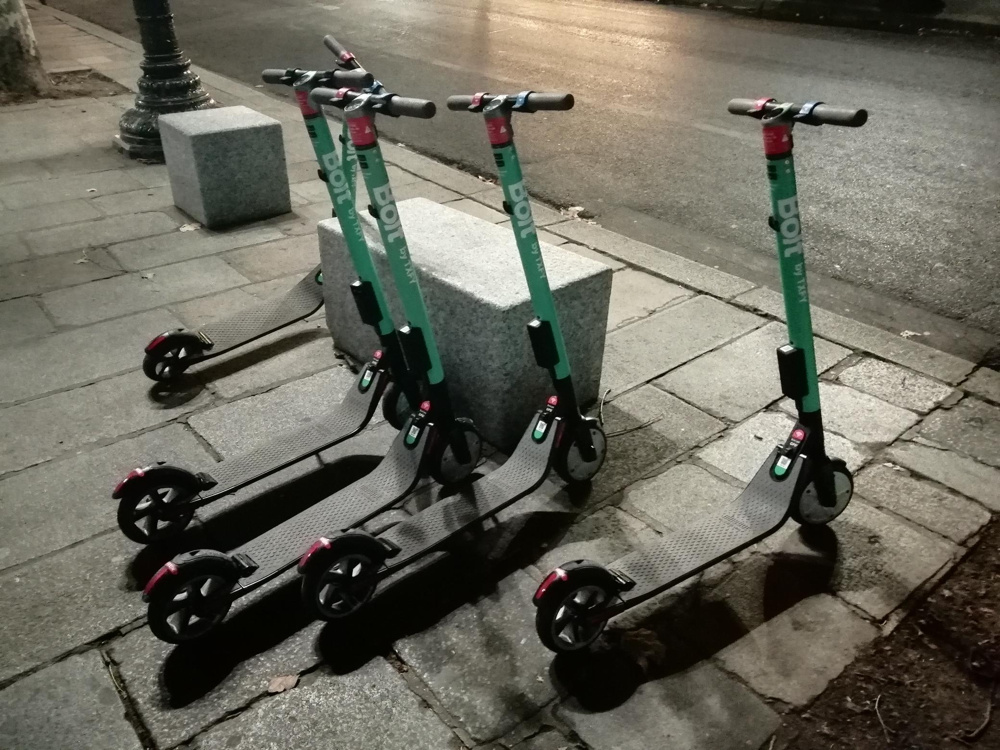
So in summary, from my unscientific survey, the dockless bikeshares are not really being used at all, the Limes and Birds are being well used, the new Velib is being used but not in the numbers I would have expected, and they are all generally being left tidily. I have no doubt that, in their current configuration/use level and street scene impact, the escootershares are a positive to the city. They are not cluttering the streets, and those that are there are being well used. There are too many operators, for sure, so some consolidation is needed – no one wants 6 share apps on their phone, but Lime and Bird at least have a good level of usage. It is very sad to see the Mobikes lying around unused, and with so few left, but they were a bike that was, initially at least, not properly designed for the European market. You can’t take shortcuts with new mobility solutions if you want them to actually be solutions. Maybe their lower profile approach will allow them to spot the markets where they can thrive, and give them the flexibility to adapt as necessary.
In London, we’ve moved on a bit from the autumn, where both Ofo and Mobike had retrenched considerably from June’s moment of “peak bikeshare”, even though we’re a long way behind Paris, thanks to escooters essentially being illegal both on pavements and public highways.
- Mobike has expanded a little bit again, back to Ealing, although their two operating areas in London are very small. The bikes are generally now always in operator-placed groups, and while these are very visible, there are few bikes which are on their own, suggesting little use by actual genuine users. They’ve massively densified the number of bikes available in the areas, however they have attached “£20 fine for leaving bike out of zone” type stickers to all the bikes – and as these zones have changed several times since launch, I can’t blame users for not daring to use the bikes. I would not be surprised if they were seeing less than 1% of the journeys (or 10% of the j/b/d) of Santander Cycles. They also seem to struggle to monitor where their bikes actually are, or what state they are left in, as the few that are out of the operator-placed groups, are often left knocked down, for days at a time. It’s not a good look on London’s pavements, and it’s an effective way to lose the non-riding public’s sympathy unfortunately.
- Ofo’s operating area didn’t shrink down as far, but unlike Mobike they haven’t restocked, so there are very few bikes to be seen anywhere in central London or the other parts of the operating area. It’s almost impossible to find one for a journey, now.
- Both stolen Ofos and stolen Mobikes are appearing less often. This is probably because there are less available to steal, and the ones that were stolen are probably in very bad condition now. Occasionally you still see a youth on a stolen one, the bike sounding like it’s about to fall apart.
- Lime has launched their ebikeshare in west London (Ealing, parts of which still have Mobike, and Brent, which was supposed to have had Mobike too but didn’t launch). You can’t officially therefore take Lime Bikes into central London. I don’t know if the motor cuts out if you do, but quite a few are appearing in central London anyway, and I think you may even be able to start from here (i.e. out-of-zone). Their starting price is very expensive though – £1 + 15p a minute. This means, after 3 minutes, it would have been cheaper taking the bus, tube or train. £1.50 flat rate for half an hour would have been better. But it’s a start, and though they are not escooters, unlike in Paris, the strength of the Paris operation suggests Lime knows something about how to run these.
- There is also an escootershare in London! Bird have launched. However, it is only available on a single route in East London, on park land that is not covered by pavement/public road restrictions. You can scoot your “Bird” between Here East, the former London 2012 Olympic media centre which is now a start-up hub that is currently very poorly connected to tubes/trains, and Stratford station, which is incredibly well connected. Again, they are very expensive – £2.50 a ride. There is a free shuttle bus between the two points, too. So, really, it’s acting as a demonstrator. But, you have to start somewhere for escootershare in the UK and this is a start.
- Santander Cycles are still not expanding, and unlikely to ever expand with TfL’s new financial woes and insistence on building very expensive permanent powered docking stations with card terminals, in a high density formation. But they did record five consecutive months this summer with over a million journeys each month. Their fleet seems to be in good working order and popular. I still think a redeployment of some docking stations further out, cheaper app-only stations, and an introduction of a Bike Angels style user rebalancing, would enhance things, but the system/contract is I suspect not set up to encourage radical innovations like this.
I look forward to 2019 as a year in which smart mobility technologies will continue to make cities better places. Look out on this blog for some exciting news, soon.
